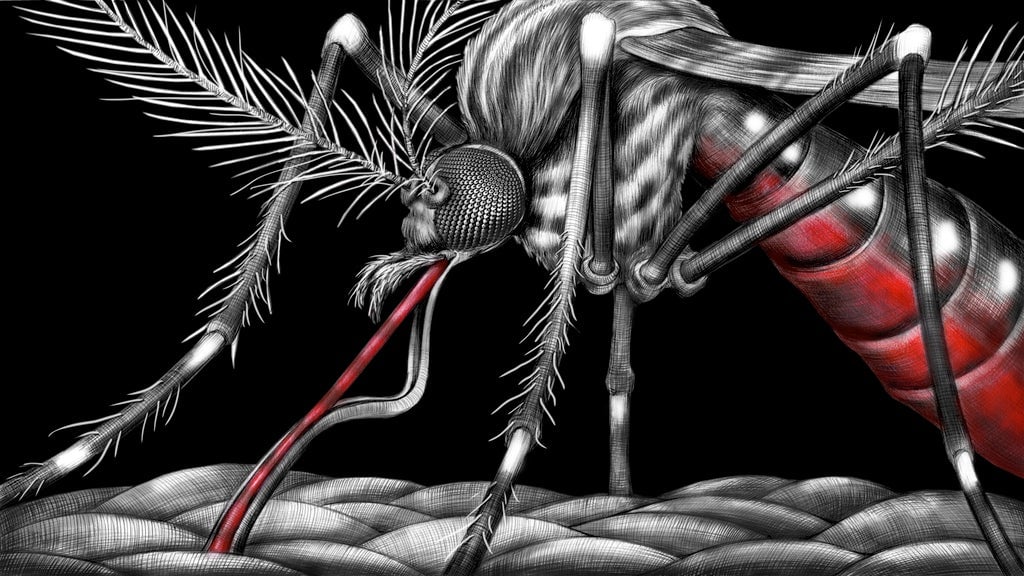Brazil is fighting its biggest epidemics with weaponized mosquitoes
Brazil has thrown everything it has against the mosquito-borne epidemics ravaging the country: education programs, planes full of insecticides, hundreds of thousands of health inspectors, and even the army. None of those have stopped the march of dengue and Zika, which are estimated to have infected nearly 3 million Brazilians—that is, more than one in 100—in 2015.


Brazil has thrown everything it has against the mosquito-borne epidemics ravaging the country: education programs, planes full of insecticides, hundreds of thousands of health inspectors, and even the army. None of those have stopped the march of dengue and Zika, which are estimated to have infected nearly 3 million Brazilians—that is, more than one in 100—in 2015.
In desperation, Brazil has turned to a biological weapon: genetically modified (GM) mosquitoes and parasite-infected mosquitoes. They have shown some early success, and the trials are being expanded.
A superb virus-delivery machine

Both the dengue and Zika virus are spread by the Aedes aegypti mosquito, which has evolved exquisitely to live alongside its target animals (us). Unlike some of its marsh-dwelling cousins, it breeds in small pools of clean water, such as in garbage cans or boats, and prefers growing in small clusters in dark areas, such as under beds or behind curtains. This makes the black-and-white striped bug one of the most difficult insects to kill.
And as a virus-injecting machine, it’s terrifyingly effective. In 2015, the Pan-American Health Organization estimates, Brazil had its worst year for dengue, with some 1.6 million cases.
Brazilian authorities also believe that some 1.5 million were infected in 2015 by Brazil’s first big outbreak of Zika virus. With both dengue and Zika, most people infected show no symptoms. Those who do feel unwell for a while, but rarely die, especially in the case of Zika.
However, what makes Zika worrying is its suspected link to microcephaly, a neurological condition where children are born with tiny brains. The number of children born with microcephaly jumped from 200 in 2014 to 3,500 in 2015. Though scientists don’t know yet how Zika virus might cause microcephaly, they think it may affect a small proportion of pregnant women who suffer from Zika symptoms in their first trimester.

Bringing out the big guns
As Quartz reported last year, because A. aegypti mosquitoes are so hard to kill using traditional methods like pesticides, scientists have been testing ways of using the mosquitoes themselves as tiny weapons against other mosquitoes.
The first of those weapons is a genetically modified A. aegypti, developed at the University of Oxford and commercialized by Oxitec. Male mosquitoes are grown in the lab and released into the wild with a genetic tweak that, when they mate, causes their offspring to die before they too can reproduce.
Trials of the technique in the Cayman Islands, Panama, Malaysia, and Brazil have cut mosquito populations by as much as 95%. A bigger trial last year in a district of the Brazilian city of Piracicaba reduced them by 82%, Oxitec said this week. Impressed, Piracicaba’s mayor has agreed to expand the trial to the city’s central district, which has some 60,000 residents.
Brazil is also testing another weaponized form of A. aegypti—this one infected with a bacterial parasite, Wolbachia, which reduces the mosquito’s lifespan. Normally, the mosquitoes live around four weeks, and it takes 10 days between a mosquito picking up dengue virus (by biting someone) and the virus multiplying enough for the mosquito to pass it on (by biting someone else). In theory, then, Wolbachia-infected mosquitoes will live long enough to reproduce—and thus keep spreading Wolbachia through the population—but not long enough to pass on dengue.
Wolbachia-infected mosquitoes have one clear advantage over genetically modified ones. The genetic tweaks created in the lab do not remain in the wild, because they cause the modified mosquitoes’ offspring to die. While that assuages fears about genetic modifications spreading into nature, it also means any country using GM mosquitoes needs to keep buying fresh supplies of them from Oxitec to keep the A. aegypti population under control. By contrast, Wolbachia-infected mosquitoes keep passing the parasite on to the next generation.
However, it’s not yet clear if Wolbachia is an effective method in the long run. Brazil’s Eliminate Dengue program launched the first trial of Wolbachia mosquitoes in 2014. Early results were good, after artificially infested mosquitoes were put in to the wild population, some 65% A. aegypti caught the parasite. But after that the population of Wolbachia-infested mosquitoes shrank.
It seems that Wolbachia weakens mosquitoes so much that they become susceptible to insecticides, which untreated A. aegypti can avoid. In July 2015, Eliminate Dengue announced that they are going to learn from the first trial and continue the program with perhaps a new strain of Wolbachia.
Yet, none of these is going to make mosquito-borne diseases disappear forever. “I don’t think it is a silver bullet, and it needs to be considered with other interventions like source reduction and individual protection,” Heidi Brown, an epidemiologist at the University of Arizona, said.
However, there is one weapon that could get rid of all mosquito-borne diseases: gene drives.
The ultimate weapon
Last November, scientists at the University of California announced that they had created a prototype gene that makes mosquitoes immune to the malarial parasite. What makes this gene even more special is that it is programmed to “drive” itself into as many offspring as it can. As Quartz reported then:
In theory, if some of these genetically engineered mosquitoes are released in the wild, within months they will create a population of mosquitoes that cannot carry malaria. Wait a few years, and it is thought that all mosquitoes on the planet could be made immune.
The idea is just proof-of-concept, and only deals with the malarial parasite for now. However, given the tremendous cost of mosquito-borne diseases, it seems likely that countries like Brazil would be keen to investigate its use against Zika and dengue as well.